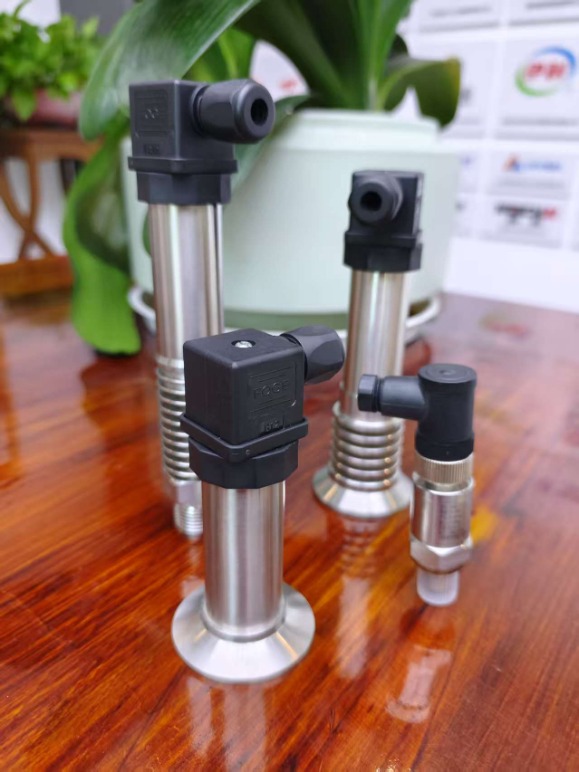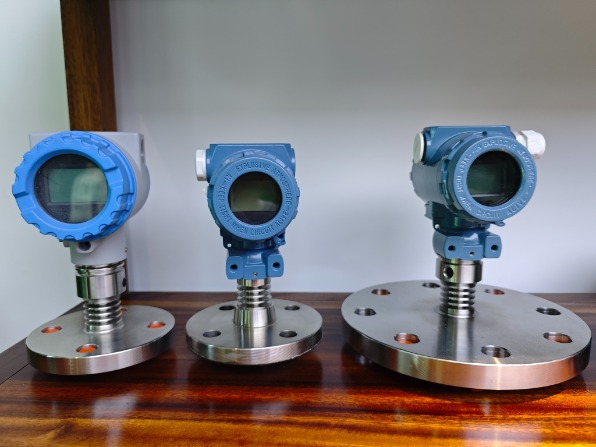YN series 100% copper connection earthquake-resistant (seismic) pressure gauge
Cat:Pressure Gauge
◆ Model: YN40 YN50 YN60 YN75 YN100 YN150◆ Use: This series of instruments have good shock resistance...
See DetailsMechanical Manometer
1.Spring Tube Pressure Gauge
This is one of the most commonly used mechanical pressure gauges. The spring tube of it is usually in the form of a C-shaped tube, disc spring tube or spiral tube, etc.The spring tube pressure gauge has a simple structure and reliable performance. It is suitable for measuring the pressure of liquids, gases or vapors that do not explode, do not crystallize, do not solidify, and have no corrosive effect on copper and copper alloys. It is widely used in departments such as machinery, petroleum, chemical industry, metallurgy, mining, and power.For instance, in oil pipelines, spring tube pressure gauges can monitor the oil pressure inside the pipeline in real time, ensuring the safety and stability of oil transportation.
2.Diaphragm Pressure Gauge
Measure the pressure by utilizing the deformation of the diaphragm under the action of pressure.The diaphragm pressure gauge has good overload resistance and high accuracy, but its shock resistance and impact resistance are slightly inferior. It can select different diaphragm materials according to different measured media, and can be used to measure the pressure or micro-positive and negative pressures of certain corrosive, non-crystalline or non-amorphous fluid media. For example, in chemical production, it is used to measure the pressure of corrosive liquids.
3.Capsule Pressure Gauge
The pressure-sensitive element is composed of two circularly wavy-shaped diaphragms that are fastened together. It is used to measure very small pressures and is therefore also known as a micro-pressure gauge.It is commonly used in gas equipment and gas pipelines, as well as in air conditioning ventilation, gas pipelines and other equipment, for measuring micro-pressure and negative pressure that do not corrode copper.For example, in household gas meters, diaphragm pressure gauges can accurately measure the minute pressure fluctuations of the gas.
4.Bourdon-tube Pressure Gauge
Using a spring tube as the elastic element, it responds sensitively to pressure changes. When the measured pressure acts on the bellows, the bellows will undergo elastic deformation. This deformation is amplified and transmitted through the internal transmission mechanism, causing the pointer to rotate on the dial, thereby directly reflecting the magnitude of the measured pressure. It can be used in situations where pressure changes are significant or quick response is required.

Digital Manometer
1.Resistance Strain Digital Pressure Gauge
The elastic deformation caused by pressure is converted into resistance changes through resistance strain gauges. Then, the resistance changes are transformed into voltage or current signals through the measurement circuit. After amplification, A/D conversion and other processing, the pressure value is displayed in digital form.High precision and good stability, widely used in industrial automation control, laboratory measurement and other fields.
2.Capacitive digital pressure gauge
The pressure is converted into capacitance changes by using a capacitance sensor, and the pressure is measured by measuring the changes in capacitance. It has high sensitivity and resolution, and is suitable for applications with extremely high measurement requirements, such as in the fields of Juntai Aviation and precision instrument manufacturing.
3.Piezoelectric digital pressure gauge
Based on the piezoelectric effect, when pressure is applied to the piezoelectric material, charges will be generated, and the magnitude of the charges is proportional to the pressure. After amplification and processing, the pressure values are displayed in digital form, and it is often used for dynamic pressure measurement, such as in transmitter testing, impact experiments, and other scenarios.
Differential Pressure Gauge
1.Liquid column differential pressure gauge
The difference between the two pressures is reflected by the height of the liquid in the U-shaped tube. The structure is simple and the accuracy is high. It is often used in laboratories or small systems.
2.Diaphragm type differential pressure gauge
By utilizing the deformation of the diaphragm under the pressure difference on both sides, the differential pressure can be measured. This method has good linearity and stability and is widely used in industrial processes for flow measurement, liquid level measurement.
3.Bellows type differential pressure gauge
Using a bellows as the sensitive element, the measurement range of differential pressure is wide, and it can be applied to the measurement of differential pressure at different pressure levels.
Special Operating Condition Pressure Gauge
1.Shock-proof pressure gauge
It is used to measure the pressure of gases or liquids that are non-corrosive to copper and copper alloys, non-explosive, do not crystallize, and do not precipitate. It can function normally in machines or equipment that undergo intense vibrations.For instance, on equipment such as concrete mixing machines in construction projects and vibrating screens used in mining operations, shock-resistant pressure gauges can accurately measure pressure.
2.Diaphragm manometer
To meet the requirements of measuring the pressure of media with strong corrosion, high temperature, high viscosity, easy crystallization, easy solidification and presence of floating solids, a system consisting of an isolator and a general-purpose pressure instrument is adopted. In the chemical and pharmaceutical industries, it is used to measure the pressure of media with strong corrosiveness, such as sulfuric acid and hydrochloric acid.
3.Electric-contact pressure gauge
In addition to measuring pressure, it can also achieve pressure control and alarm functions by setting electrical contacts. When the pressure reaches the set upper or lower limit, the electrical contacts will close or open, triggering the corresponding control signal or alarm device. It is often used in fire pipeline control measurement to control the start and stop of fire pumps, as well as in some industrial production processes that require automatic control of pressure.
4.Oxygen pressure gauge
It is specifically designed for measuring oxygen pressure. Since oxygen may heat up, ignite and even explode when mixed with grease, the oxygen pressure gauge must be absolutely free of oil during both operation and calibration. During the calibration process, a water separator is usually added, or a water pressure pump is used for calibration.
5.Refrigerant pressure gauge
Suitable for media with low temperatures or for special media such as refrigerants (Freon) or ammonia, and is applied in equipment like air conditioners, refrigerators, and water chillers.
Other products of the pressure gauge type include many, many more, such as intelligent digital pressure gauges, electromagnetic flowmeters, vortex flowmeters, radar level meters, ultrasonic level meters, immersion level meters, pressure transmitters, temperature sensors, and so on.
